I’m in Tucson this week for the BHMA Fall Meeting. My husband thinks it’s all fun and games, but we’ve been working hard on some new standards – one for ligature-resistant hardware and one for residential hardware. There’s a lot more on the agenda over the next couple of days, but it’s a beautiful area to have a meeting, the hotel is great, and I saw my first javelina today (I still think it was a wild boar :D).
I think any fire door in a room with 30 or 40 BHMA members would face intense scrutiny, but the pair leading to today’s meeting room was particularly interesting. And by “interesting”, I mean non-code-compliant. Mark Berger of Securitech and I simultaneously noticed the server using a creative dogging device, although Mark was closer so he actually got a photo of said server in action. During a break, we gathered around the opening like a pack of newly-certified fire door assembly inspectors at the end of an FDAI course.
Here are the doors to our meeting room. As you can see, they are labeled, with less-bottom-rod (LBR) fire exit hardware, and they must be equipped with an electrified hold-open of some sort since one leaf is standing open.
Here is the creative dogging method – zip-tie dogging. This fire exit hardware has active lever trim on the pull side so the dogging was not necessary to unlock the doors, but it was being used to cut down on the noise of the latches while the meeting was in session (electric latch retraction would have been a better solution). Because of the space behind the device, the zip ties could slide on and off the touchpad as needed.
The hotel we’re meeting in has several sets of LBR devices with no auxiliary fire pin installed on the edge, so I was pleasantly surprised to see that the pin was installed on this pair of doors. When the pin is heated during a fire, it releases to project into the other leaf and hold the doors aligned (you can read more about LBR devices here). I checked the edge of the other leaf for the plug that covers the hole where the pin projects, and found the situation below. Will the aluminum retainer for the pile weatherstrip have melted away by the time the pin projects? Probably. I wonder how they got the two pieces of the plug to stay in the hole.
When I investigated the hold-open mechanism, I found that the magnetic holder was not engaged. But the door sweep dragging on the carpet was doing a good job of making sure the door was open and not creating an inconvenience for us.
I didn’t do a full fire door inspection but I did notice quite a gouge that would be an issue.
And finally, the US10B lever trim. For any architects out there who just ran across this post by Googling, “Why is my US10B finish coming off?”…that’s how US10B finish wears. It’s not defective. Where you touch the hardware, the dark bronze wears off and exposes the dull brass underneath (here are some more examples).
I have some other doors from this trip that I’ll post later in the week! Thanks for your patience – it’s taking me longer than usual to get through my emails.
You need to login or register to bookmark/favorite this content.

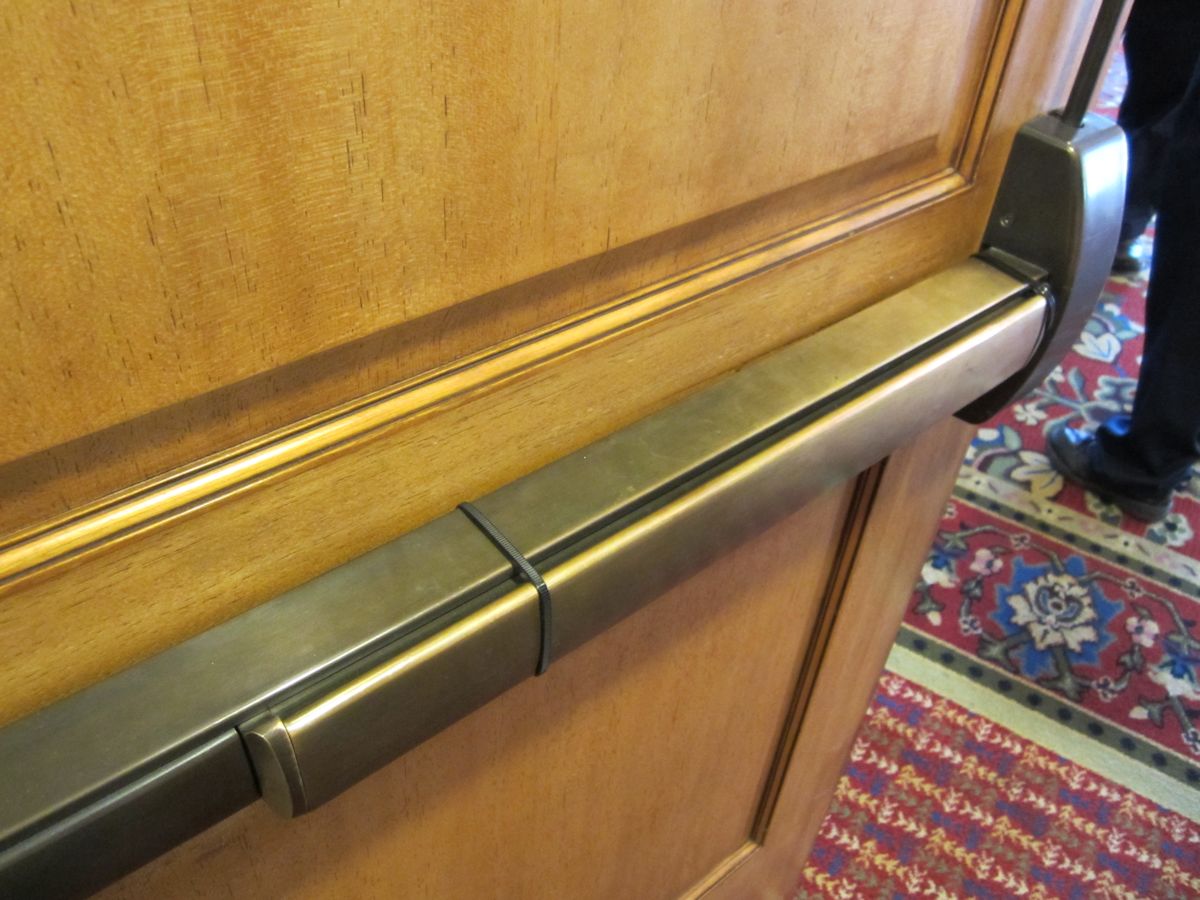
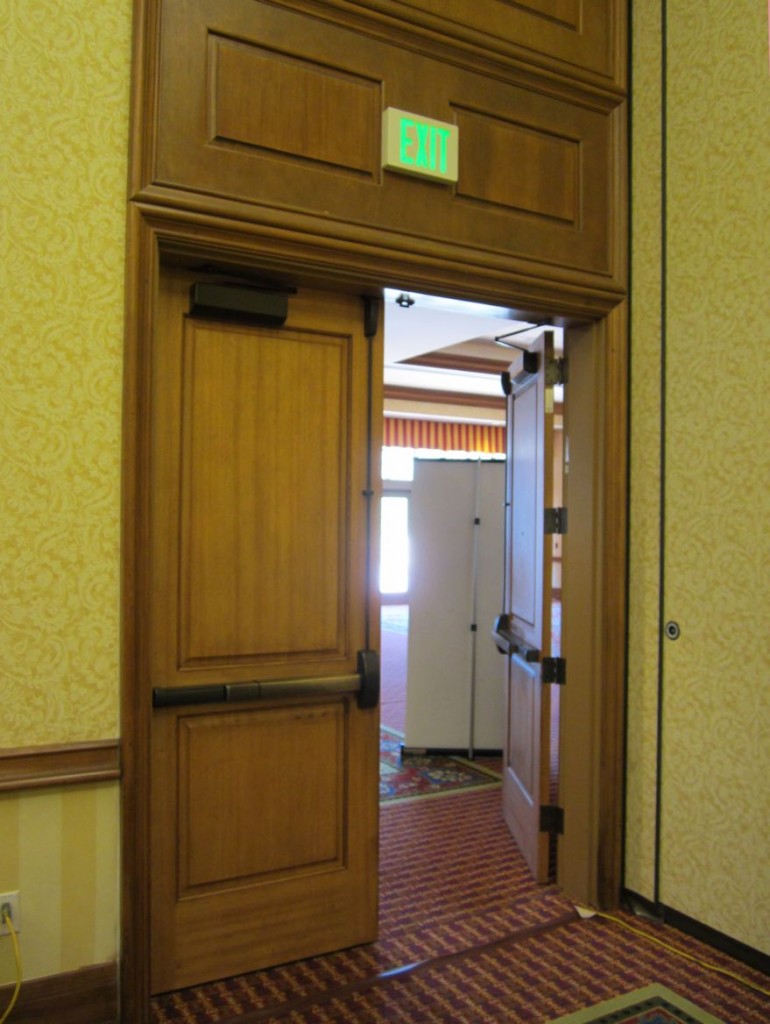
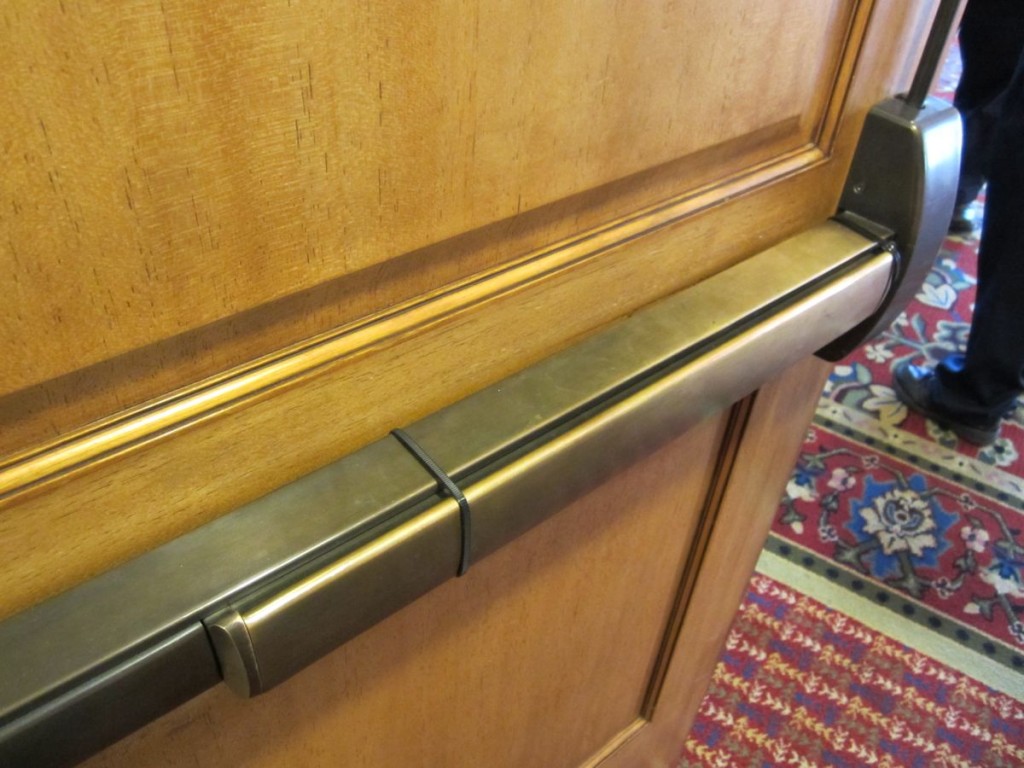
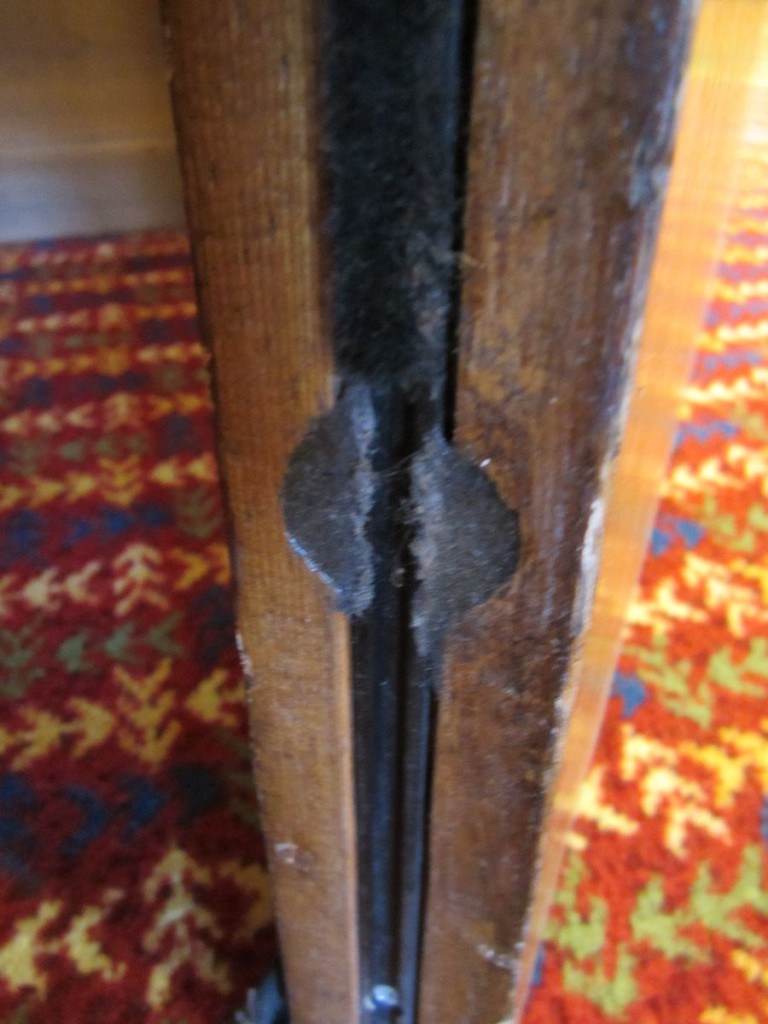
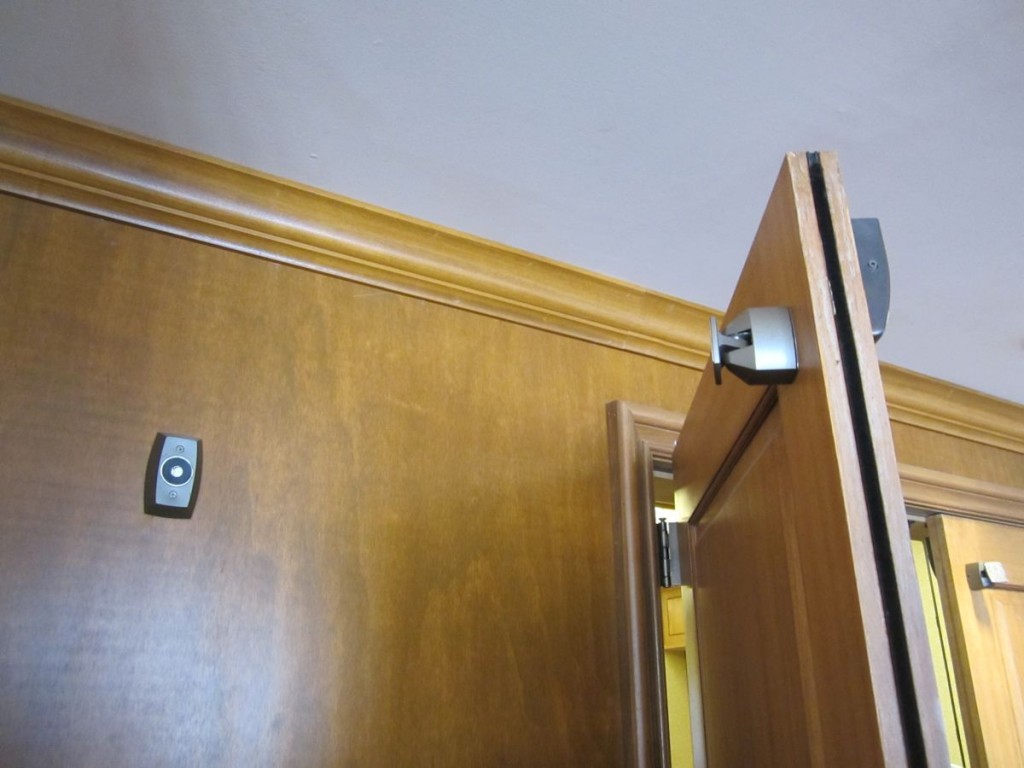
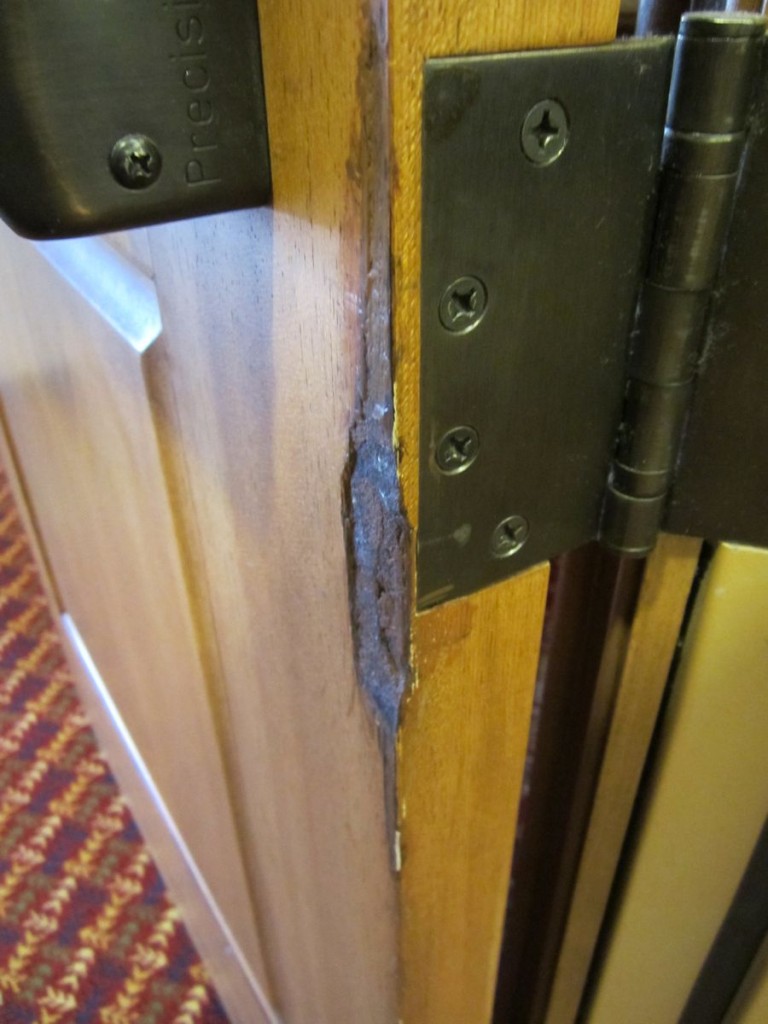
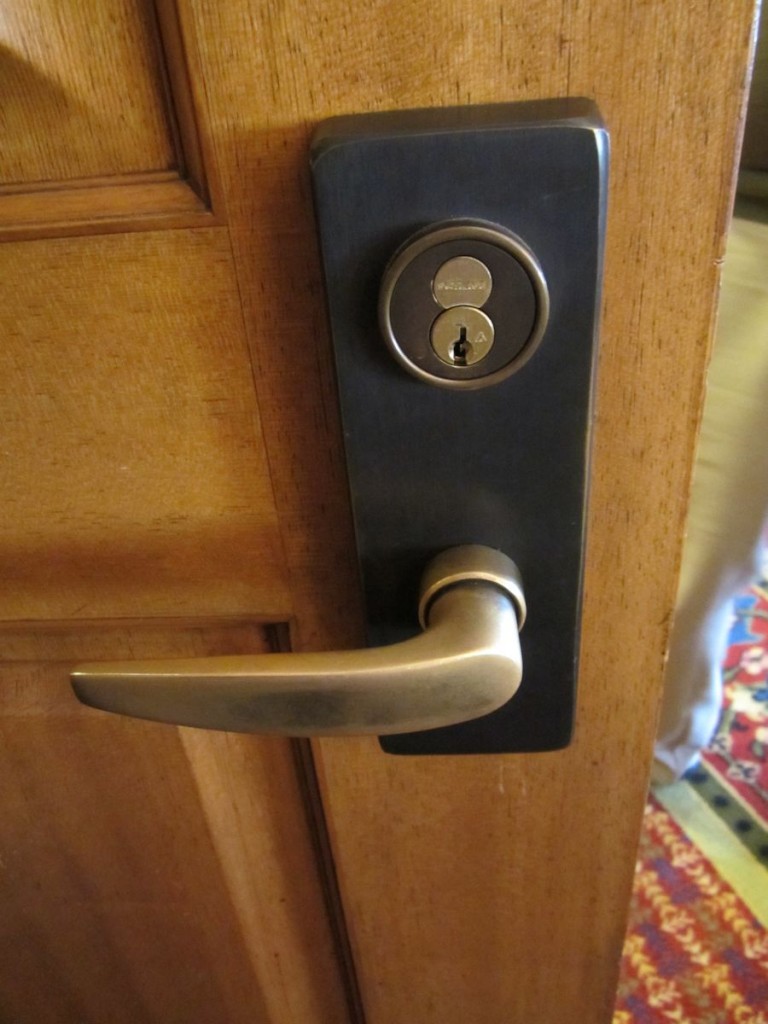




Those look like nice stile-and-rail doors. However, I wonder if they are approved for use in pairs without metal edges. I don’t see a supplemental label–but I guess the existing label might refer to it. Or, if they’re 20-minute, they might be okay without the metal edges.